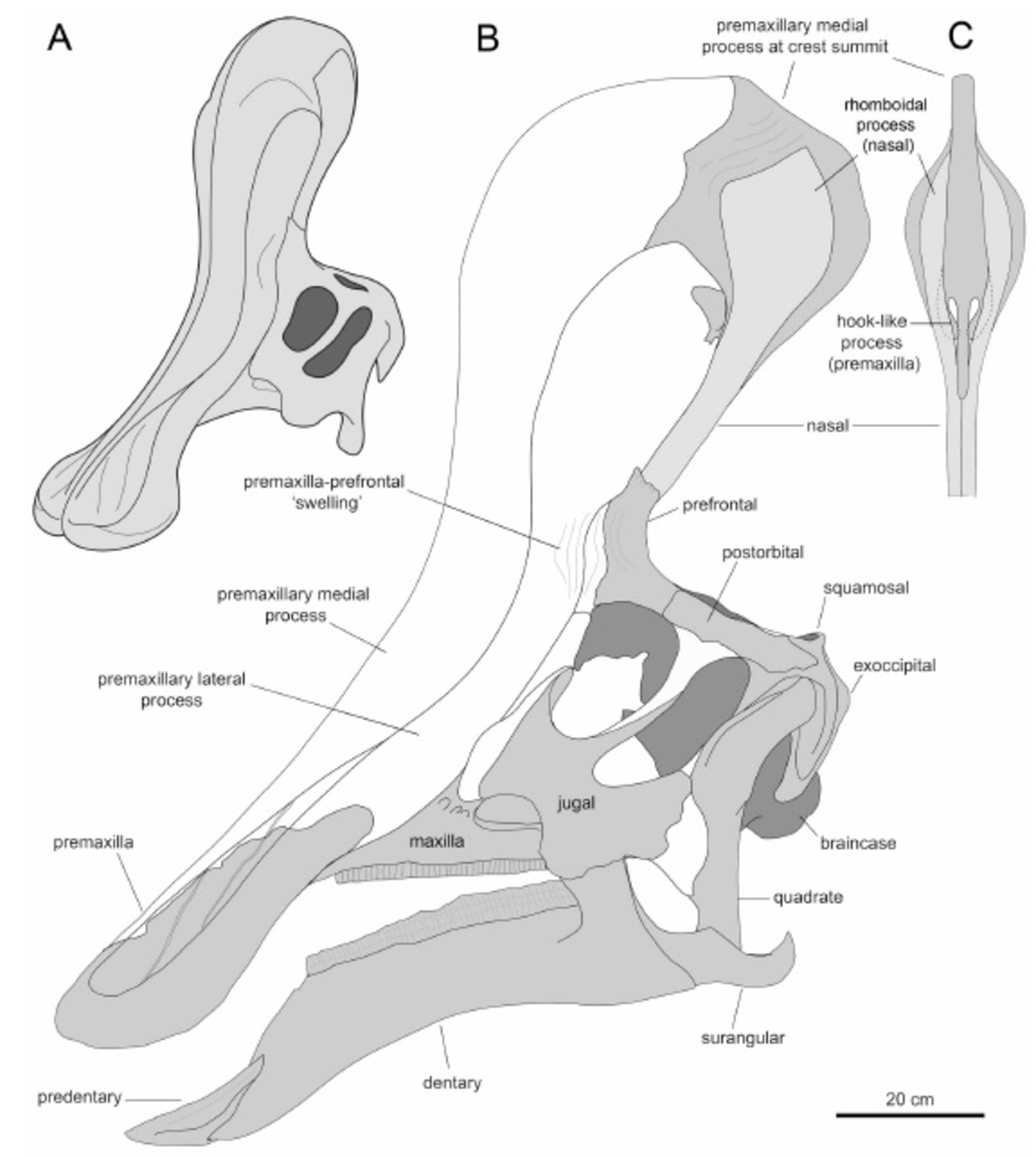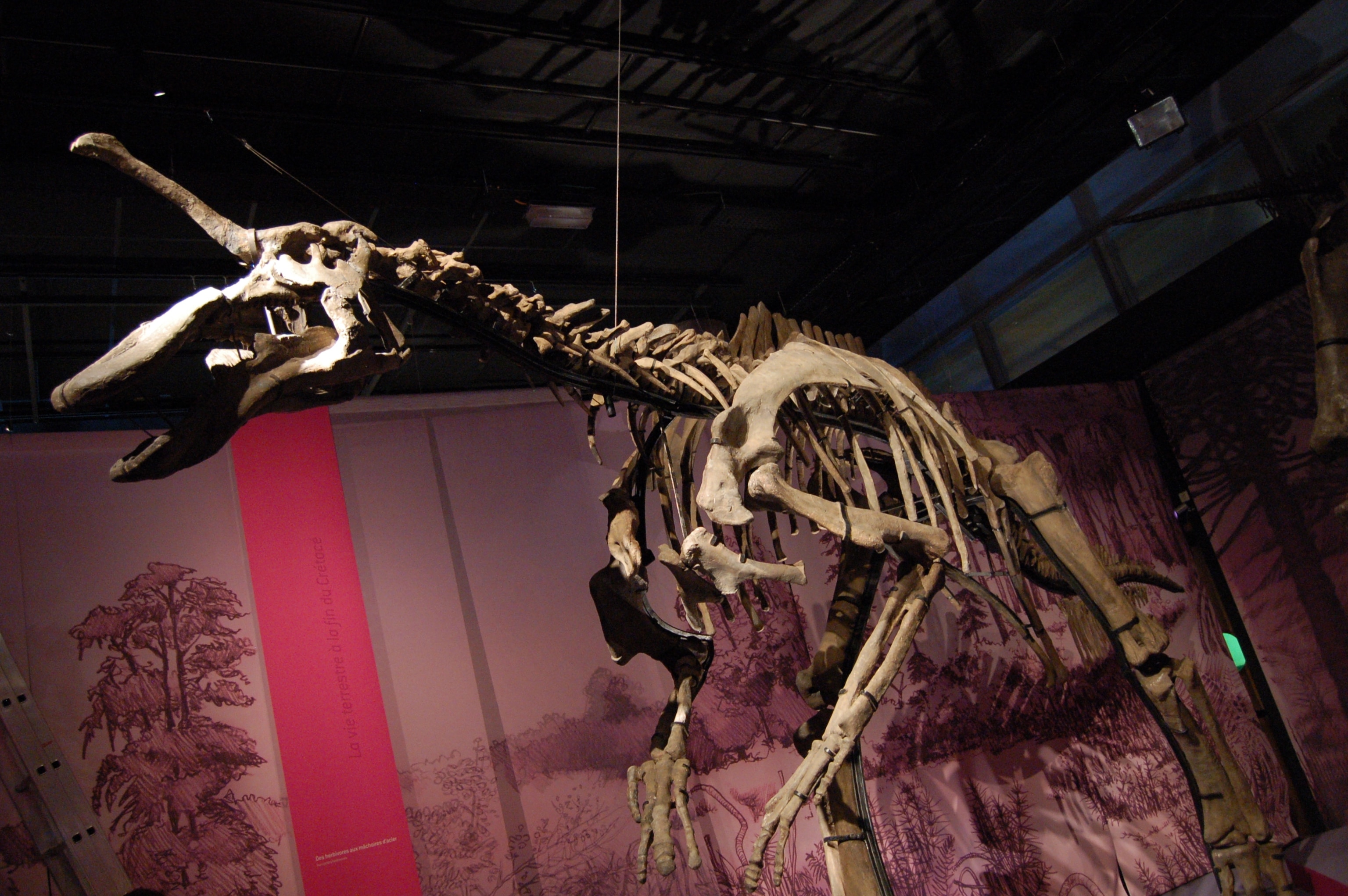Tsintaosaurus has always been an oddball hadrosaur. That’s part of what made the shovel-beaked herbivore a favorite in dinosaur books and model collections. Instead of the domes or tubes seen in other crested hadrosaurs, such as the well-known Corythosaurus and Parasaurolophus, the weird Tsintaosaurus seemed to have nothing but a spike with a little fork at the end. This was a duckfaced unicorn. And since some artists thought such cranial decoration was a little subdued, they often added round, inflatable sacs at the spike’s base. But that’s bollocks. In PLoS One, paleontologists Albert Prieto-Márquez and Jonathan Wagner have given Tsintaosaurus a more dignified look with an expanded crest.

The mystery of what Tsintaosaurus actually looked like goes back to fossils from the Late Cretaceous of China that paleontologist Yang Zhongjian (also known as C.C. Young) described in 1958. In his reconstruction, Yang figured a tubular spike made of the nasal bones jutting from the dinosaur’s skull. But this ornament was so unlike that of other crested hadrosaurs that other researchers questioned whether the spike was a real feature. Paleontologist Philippe Taquet, for one, suggested that the Tsintaosaurus spike might simply be a nasal bone that was wrested out of place by distortion after the hadrosaur’s death.
But the skull that Yang described wasn’t the only one. Another partial skull, previously studied by Eric Buffetaut and Haiyan Tong, had skull bones in similar positions to support a crest, and the new study also attributes a forgotten pair of skull bones to Tsintaosaurus. The spiky nasal bone was a real feature and close to its actual placement. And with this material in hand, Prieto-Márquez and Wagner make the case that this hadrosaur had a hollow, domed crest that was more like those of the dinosaur’s later relatives.

Rather than pointing forward, as it does in many artistic depictions, Prieto-Márquez and Wagner hypothesize that the spiky nasal bone was connected to the prefrontal bone above the eye socket and angled backward, making up part of the crest’s rear margin. The main body of the crest itself, which is still missing, would have been made of premaxillary bones that connected the front of the snout to the rear-pointing nasal. The skull of Tsintaosaurus was probably more shoehorn than unicorn.
The crest of Tsintaosaurus wasn’t only for show, though. Like other crested hadrosaurs, which fall into a group called lambeosaurines, Tsintaosaurus would have had nasal passages that looped through those expanded premaxillary bones. This circuitous route would have allowed Tsintaosaurus to make unique, low-frequency calls, similar to those reconstructed on the basis of the crests and inner ears of better-known hadrosaurs. Dinosaurs like Tsintaosaurus were probably among the most vocally adept of all the non-avian forms.
For now, though, the route the dinosaur’s nasal passage would have taken is speculative. The relevant bones haven’t been uncovered, and, despite its name, the nasal bone itself had little to do with the internal plumbing of the hadrosaur’s skull. Future finds will fill out what’s missing. The test of the hypothesis lies with undiscovered bones. This will give artists a little leeway as they imagine what Tsintaosaurus looked like, but, happily for the dinosaur’s legacy, the hadrosaur will no longer wear a suggestive spike.
[For another take on this study, see Jaime Headden’s post.]
References:
Prieto-Márquez, A., Wagner, J. 2013. The ‘unicorn’ dinosaur that wasn’t: A new reconstruction of the crest of Tsintaosaurus and the early evolution of the Lambeosaurine crest and rostrum. PLoS One. 8, 11: e82268.

